Montreal Impact go all in on prep for CONCACAF CL final vs. Club America

There have been no shenanigans so far—no overnight fire drills, no fans in the hotel hallway, no impromptu concerts on the street or in the lobby. Local media has stopped by—the Montreal Impact even conducted a small news conference on Sunday—but there’s been no intrusion or inconvenience.
“They’ve been pretty good. They leave us alone,” Montreal coach Frank Klopas said. The “craziness” foreign teams sometimes confront when preparing for big games in Latin America has been absent, he told SI.com. His club isn’t being treated like an intruder—at least not yet.
Impact fall to Alajuelense, but advance on away goals to CCL final
Klopas used words like “familiar” and “routine” when discussing Montreal’s preparation for Wednesday’s momentous CONCACAF Champions League final opener against Mexican powerhouse Club América. “Familiar” and “routine” were the goals. The unheralded Impact’s exhilarating run through the continental championship tournament has been as much about investment, priorities and preparation as it has been the squad’s poise and opportunism in the knockout stages.
Klopas, his players and Impact owner Joey Saputo have gone all-in despite the long odds, and it’s paid off. Montreal, winner of only seven of its past 47 MLS matches, has clawed its way to within two games of history. It’s already the first MLS club to win two home-and-home series over Latin American opposition in the same competition. A third will send the Impact to December’s FIFA Club World Cup and give MLS its first CONCACAF title in 14 years, its first in the CCL era and a coveted place on the global stage.
Saputo and Klopas laid the groundwork for Montreal’s run in February, when they opted to prepare for the quarterfinal opener against Pachuca with a three-game, 17-day sojourn in Mexico. The Impact spent around two weeks in the capital, training at altitude and building chemistry within a squad featuring a dozen new players. The team then traveled to Pachuca, where it earned a 2-2 tie in the quarterfinal’s first leg. Going in, MLS teams had avoided defeat in just eight of their 40 competitive matches in Mexico. The draw set the stage for rookie Cameron Porter’s stoppage-time clincher one week later in Quebec.
“We planned and prepared right and I think the players bought in and had a good mentality,” Klopas told SI.com upon the Impact’s return. “We became a team and I think, more than anything on that trip [to Mexico], we bonded as a group.”
The Impact were brilliant in a 2-0 dismantling of visiting LD Alajuelense in the first game of the CCL semis. Then, despite missing Porter (knee) and veteran playmaker Justin Mapp (elbow) with injuries, Montreal survived the return leg in Costa Rica and advanced on away goals following a 4-2 defeat.
Montreal Impact change course with roster overhaul, locker room cohesion
Composure on the road has been the key to the Impact’s success. It faced offensive onslaughts in both Pachuca and Alajuela and a very hostile crowd in the latter (goalkeeper Evan Bush was hit in the head by a coin and forward Dominic Oduro claimed he was subjected to racist abuse).
Yet it avoided folding like so many MLS predecessors and scored an impressive four road goals to boot.
When América destroyed visiting CS Herediano, 6-0, in the decisive second leg of their semifinal series, Klopas knew he needed to provide his team every advantage possible ahead of the finals. He gave his players a few days back in Montreal following last weekend’s 3-0 MLS loss to the Houston Dynamo. Then, last Thursday, a party of around 45 that included Klopas and his assistants, the players, two team administrators, two communications staffers, a videographer, a doctor and a team chef boarded a charter flight to Mexico City.
They planned to spend six nights at the same hotel they visited in February—it’s a relatively short drive to the Estadio Azteca—and to develop the same familiarity with the altitude and conditions they enjoyed two months ago. Everything else is carefully controlled, from the players’ free time to their diets. Chef Mario Di Molfetta is closely monitoring carbs, calories and hydration, preparing every meal and snack and making sure it's beetroot juice, not beer, that’s the beverage of choice.
The trip will cost the Impact around C$300,000 ($245,600).
“That’s been the big focus with our club, even with the first trip, coming here for preseason for 17 days, bringing our own medical staff, our own chef with us, it was very important we controlled everything,” Klopas told SI.com by phone from Mexico City. “The commitment from the club went a long way—our ability to charter down here—all those little things have a huge impact and make a big different. The president, Joey, is behind us 100% and there was not really a lot of discussion.”
MLS Power Rankings Week 7: Red Bulls are last unbeaten; Dallas's delay
Every MLS team will claim the CCL matters, but it clearly does to Montreal. The Impact were always competitive in the U.S./Canadian second tier, winning three championships, but it was the stunning run to the 2008-09 CCL quarters that put the then-USL team on the North American map.
Since joining MLS in 2012, Montreal has been known more for unmet expectations and upheaval.
There was one playoff berth (which ended terribly) and three head coaches in the first three seasons, and in January, Saputo told reporters that, “The buzz for the Impact is gone.”
Doing well in the CCL would help bring it back both at home, where fans were tired of losing and where the first-place Canadiens were embarking on a quest for a 25th Stanley Cup, and across the rest of Canada and the U.S., where it’s so easy simply to look past the French-speaking city to the north.
Man with The Plan: Inside Ali Curtis's task of revamping the Red Bulls
Not only has Saputo invested a quarter million dollars on this trip alone, he consented to the almost-unheard-of decision to postpone the club’s Stade Saputo opener. A match that fans, sponsors and everyone associated with the club had anticipated for nearly four months—last Saturday’s game against the Chicago Fire—now will be played in September. The Impact’s April 25 meeting with the San Jose Earthquakes has been shifted to September as well.
That means Klopas and his team can focus solely on América, which was granted no such consideration by colleagues and opponents in Liga MX.
The buzz clearly is back. There are some 20 members of the Montreal media in Mexico for Wednesday’s game, and the April 29 CCL decider at Stade Olympique is already sold out (59,020 tickets).
MLS's footprint in Brazil provides an option amid domestic league woes
To ensure that final game remains meaningful, the Impact will have to survive the Azteca, where more than 100,000 fans and the reigning Mexican champion await. América’s domestic season hasn’t been up to standard. Las Águilas are 6-4-4 and coming off a surprising 4-0 home loss to Querétaro, but it remains the prohibitive favorite on Wednesday. Paced by Mexican national team star Oribe Peralta, América has scored 30 goals in only eight CCL contests.
It will be missing defenders Paolo Goltz and Ventura Alvarado, the newly minted U.S. international, through suspension, but still is stocked with domestic and South American talent.
It’s the biggest game in the history of the Montreal Impact, a club that first took the field three years before MLS kicked off, and surely the most challenging. There is no experience like the Azteca experience. Klopas never played there as a member of the U.S. national team. No MLS team has taken the field there for a competitive fixture.
Yet on Wednesday, it won’t seem entirely foreign. At least that’s the hope. Impact players now are accustomed to the warmer, thinner air. They have gone on the road against similar teams, in similar environments, and managed to get good results. They’ve seen similar styles and survived similar conditions. Now they have to do it just one more time.
“There will be possibilities on the counter, like we’ve done in the last few games,” captain Patrice Bernier told the club website. “I’m especially thinking of Pachuca, where we knew that the Mexican teams want to have the ball. They leave some space, so if you go out there and get a good result … then we can take advantage of that and finish it off at home.”
Said Klopas, “Coming here at the time we did, we felt it was more than enough to do the things we wanted to do on the field and then focus on preparing and studying the opponent … It’s been close to perfect and I think the guys are feeling really, really good and they’re energized.”
GALLERY: Critiquing every MLS team's uniforms
Critiquing every MLS uniform, head to toe
New York City FC
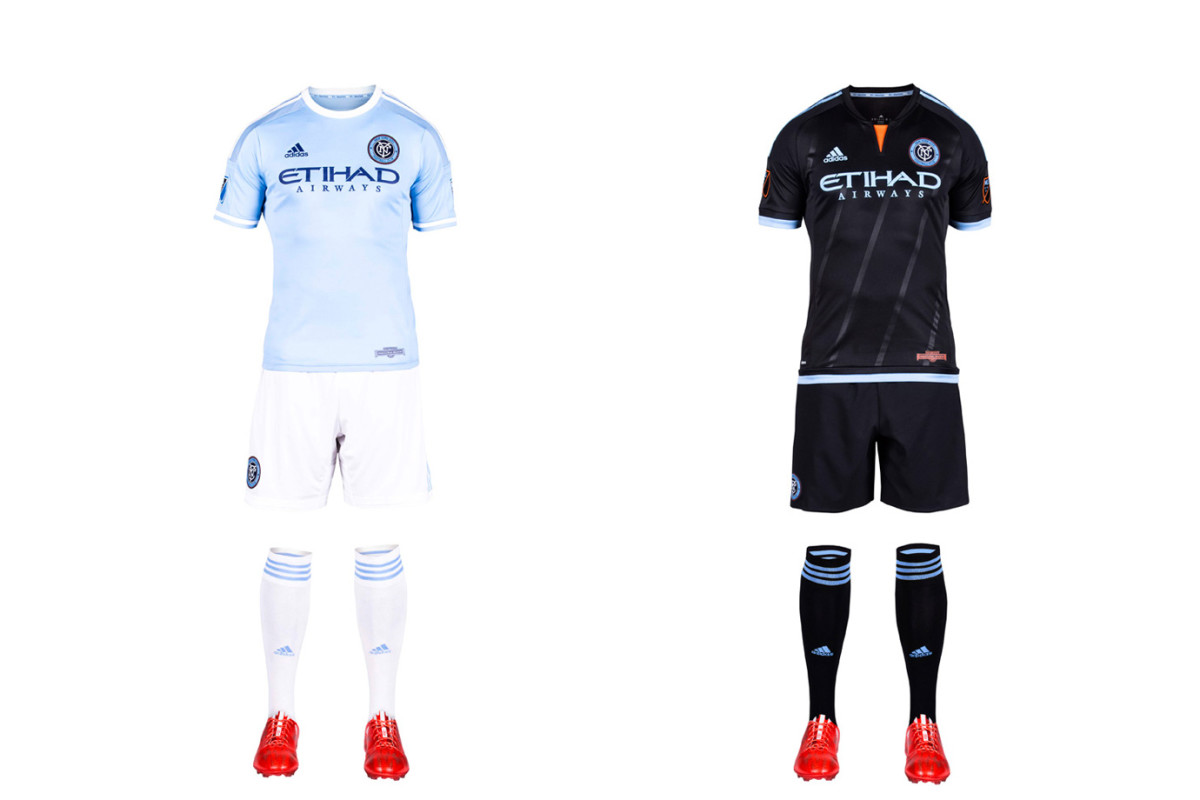
New York City FC took some heat for its sky blue home shirt, which looks a whole lot like the one worn by parent/sister club Manchester City. But an homage was inevitable, and NYCFC has differentiated itself from MCFC, and the rest of MLS, with the white shorts and socks. It’s a sharp look. The away kit, highlighted by a flash of orange (from the city flag) at the neck and five stripes you can barely see that "represent the five boroughs of New York City," is lazy. With a blank template, NYCFC should’ve come up with something other than the mono-black already worn in D.C. and Columbus.
LA Galaxy
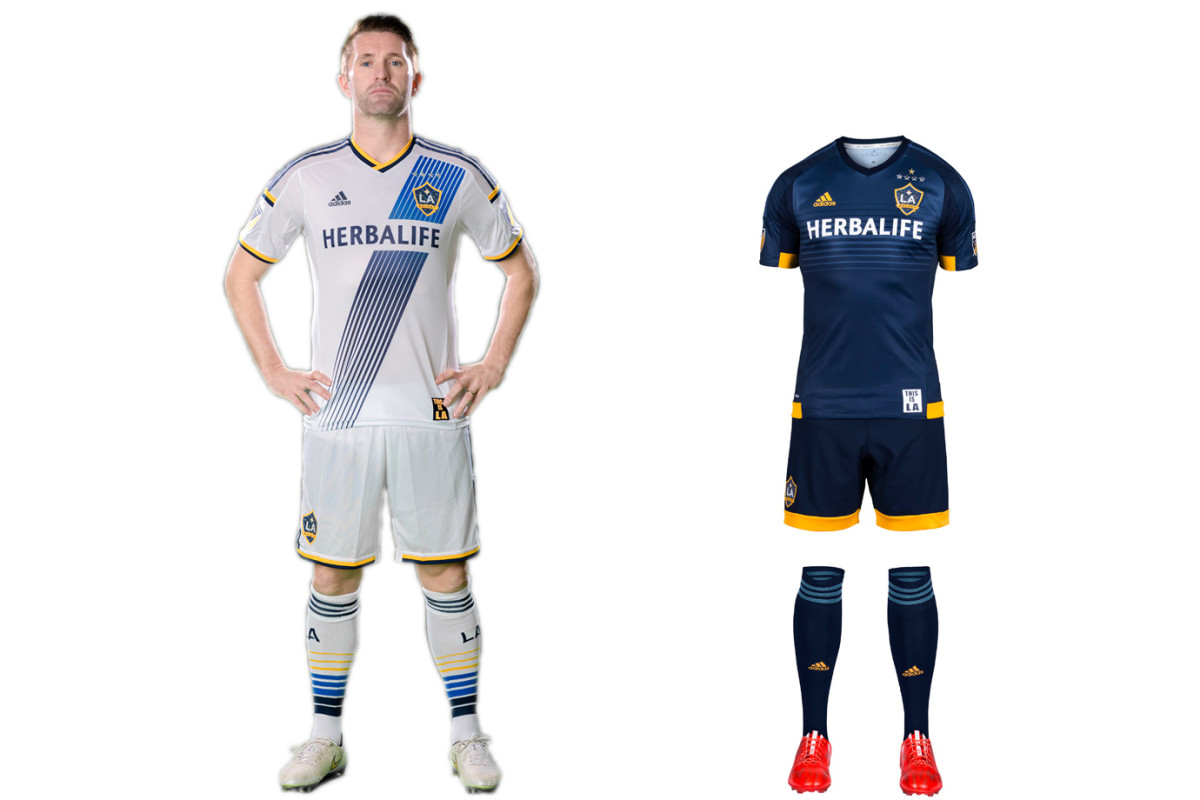
After several overhauls—LA wore black and teal, then teal and yellow, then yellow and green—the Galaxy’s white and blue brand has taken root. Three championships in four years certainly help. The sash on the home uniform, re-introduced in 2012, has quickly become iconic, and, along with the socks, helps make this all-white kit stand out. The new secondary set maintains the same feel as its recent predecessors. The yellow accents look sharp, but we can’t help but feel a white or yellow sash would tie the uniforms and brand together.
Chicago Fire
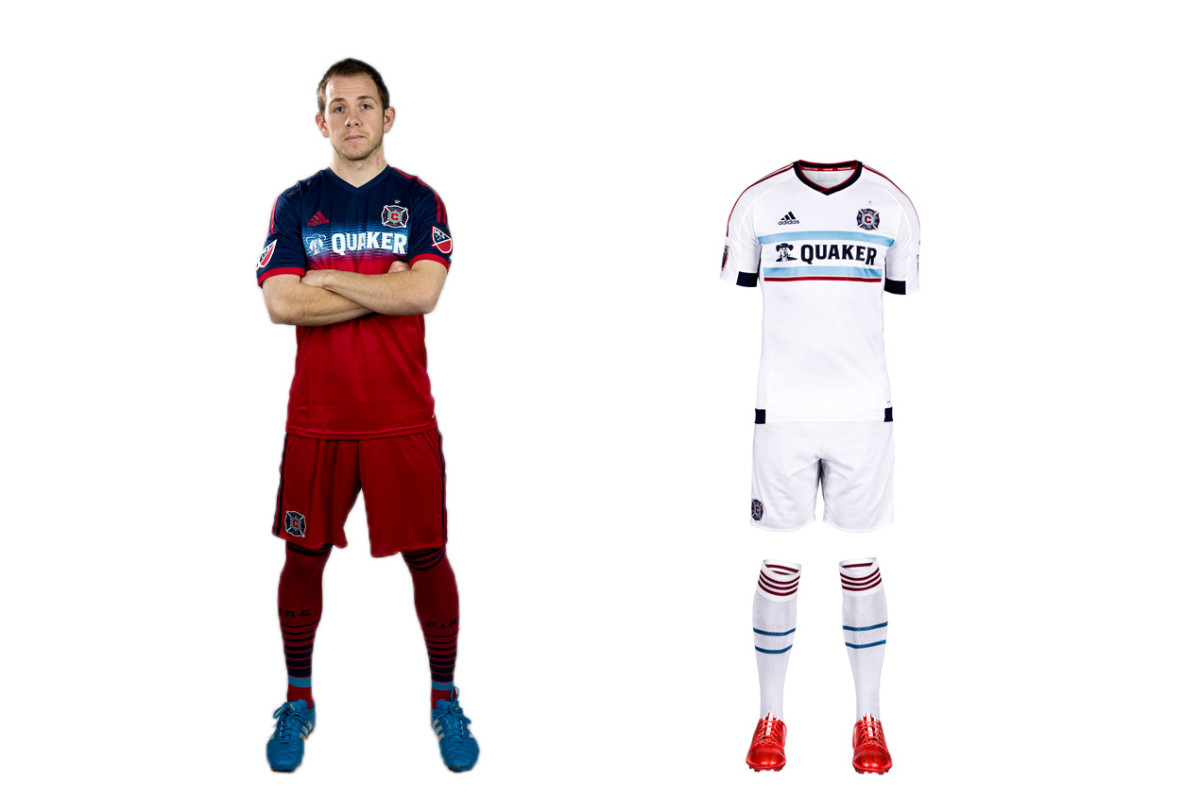
Of the four MLS teams with an all-red home uniform (that’s 20 percent of the league), the Fire were first. They’re the “Men in Red,” after all. But Chicago began veering away from its traditional look in 2012. First the famous white hoop became blue. Then last year, the blue expanded to the chest and shoulders. It doesn’t look bad, but it doesn’t seem right, either. The new away kit is another all-white offering. But at least designers put a bit of thought into this one. The thin, light blue hoops on the shirt and socks, intended to reflect the design of the city flag, are a nice touch.
Montreal Impact
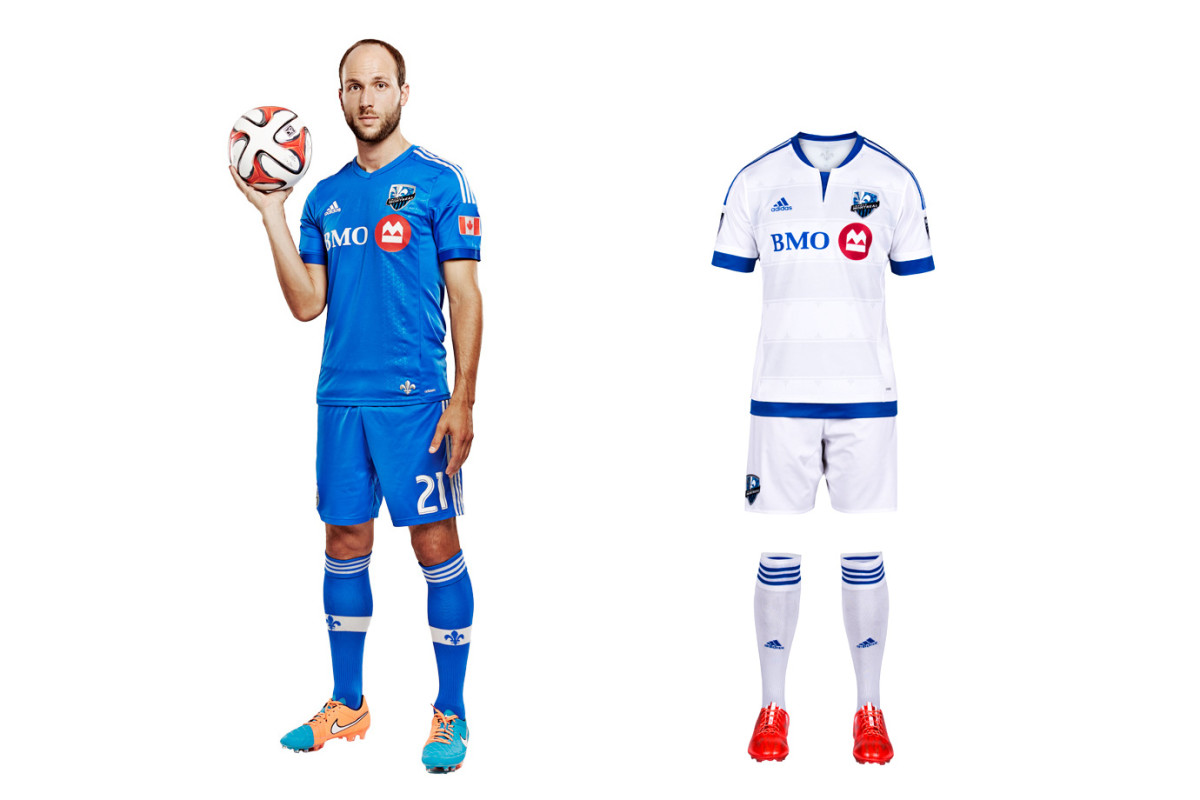
Montreal exemplifies MLS/Adidas’ fixation on tiny details rather than the impact (sorry) a uniform makes when viewed from more than three feet away, which is where most people watch a game. The new away kit features a tiny silver fleur-de-lis affixed to the back and more woven subtly into the fabric. But overall, it’s just another anonymous all-white uniform that mirrors the existing, plain blue primary set. The tragedy is that Montreal’s gorgeous blue-and-black striped alternate, which would be the only striped kit in MLS, is gathering dust. It should be the club’s primary.
D.C. United
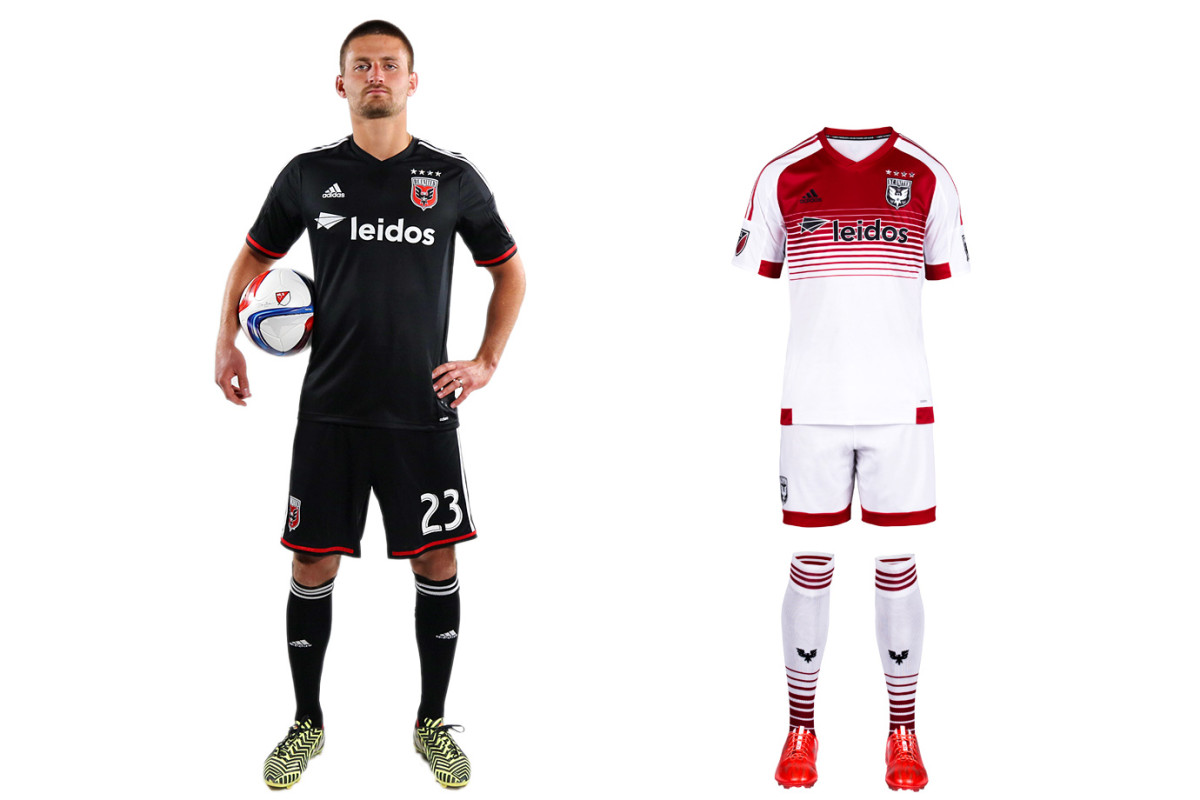
D.C. United calls itself the “Black and Red,” but its uniform palette typically has ignored the latter. That’s been rectified with the club’s new secondary kit, which features a welcome splash of red on the traditional white jersey. The home uniform, which carries over from 2014, still looks unfinished without the white chest stripes that were dropped in 2008. If D.C. could find a way to re-introduce them, perhaps above the sponsor logo and behind the crest, it once again would boast one of the sport’s most distinctive designs.
Real Salt Lake
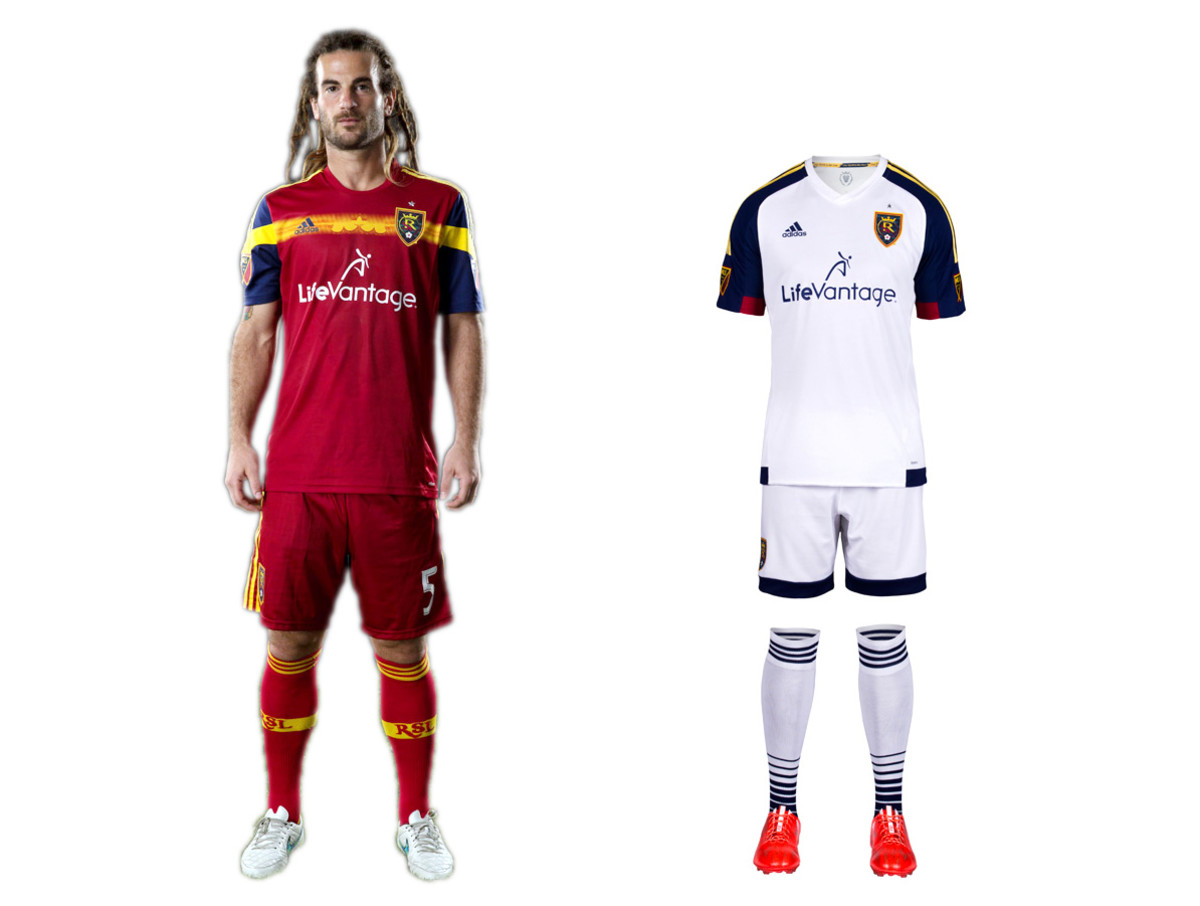
RSL stubbornly refuses to look great. It took a small step forward with its new secondary uniform, which now features two blue sleeves. It's too bad there isn’t even more of RSL’s beautiful claret, cobalt, and gold color scheme in the kit. The red home set carries over from 2014, making it six seasons since RSL abandoned the claret shirt, cobalt shorts/socks combo it wore when winning its only MLS title. The yellow chest stripe adds a little something extra, but RSL’s preference for an all-red kit similar to others around the league instead of a classy, one-of-a-kind look with championship pedigree is baffling.
Toronto FC
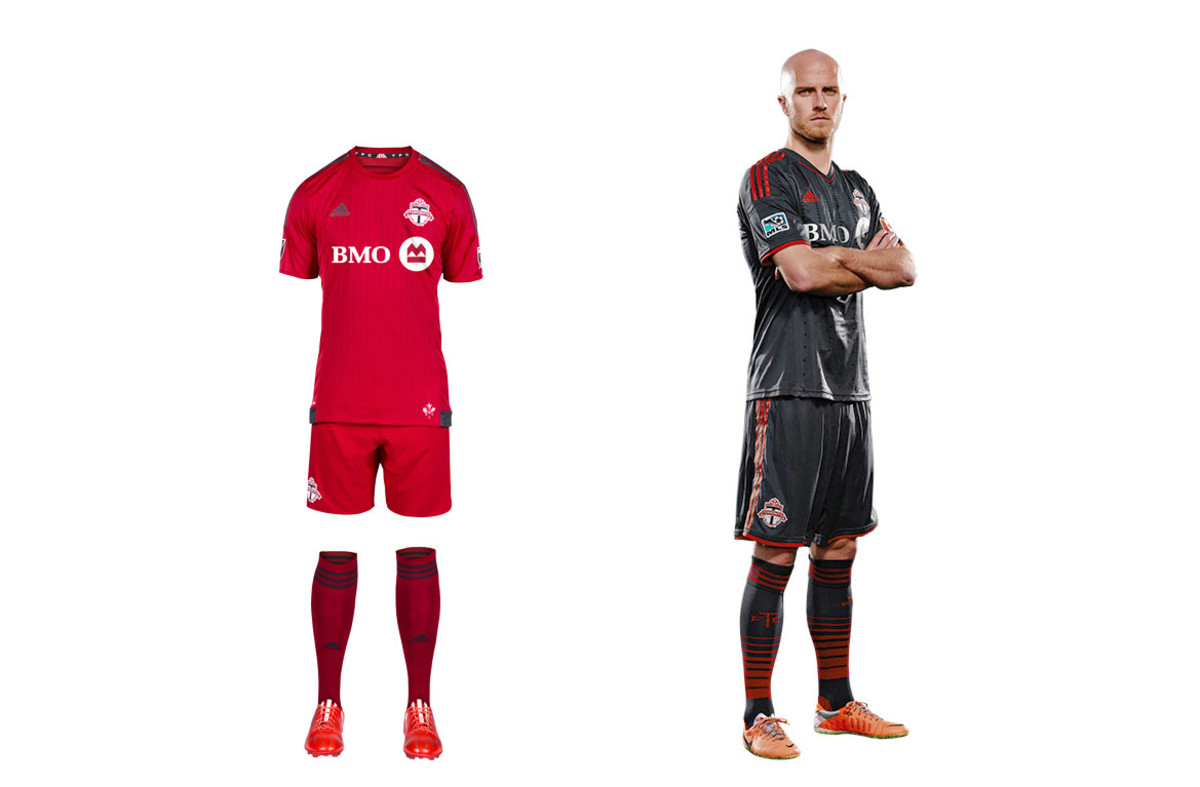
Toronto FC’s new home set could be the reddest uniform in the history of a league that loves red uniforms, which we suppose is noteworthy (guess Adidas insisted on the contrasting three stripes). Club management has focused on building a team capable of ending an eight-year playoff drought, likely leaving little time for kit design. The holdover secondary set is charcoal gray, which features in the TFC logo and is a unique uniform color in MLS. The hooped socks finish off a striking look and make us wish there was a bit more gray in the primary.
New England Revolution
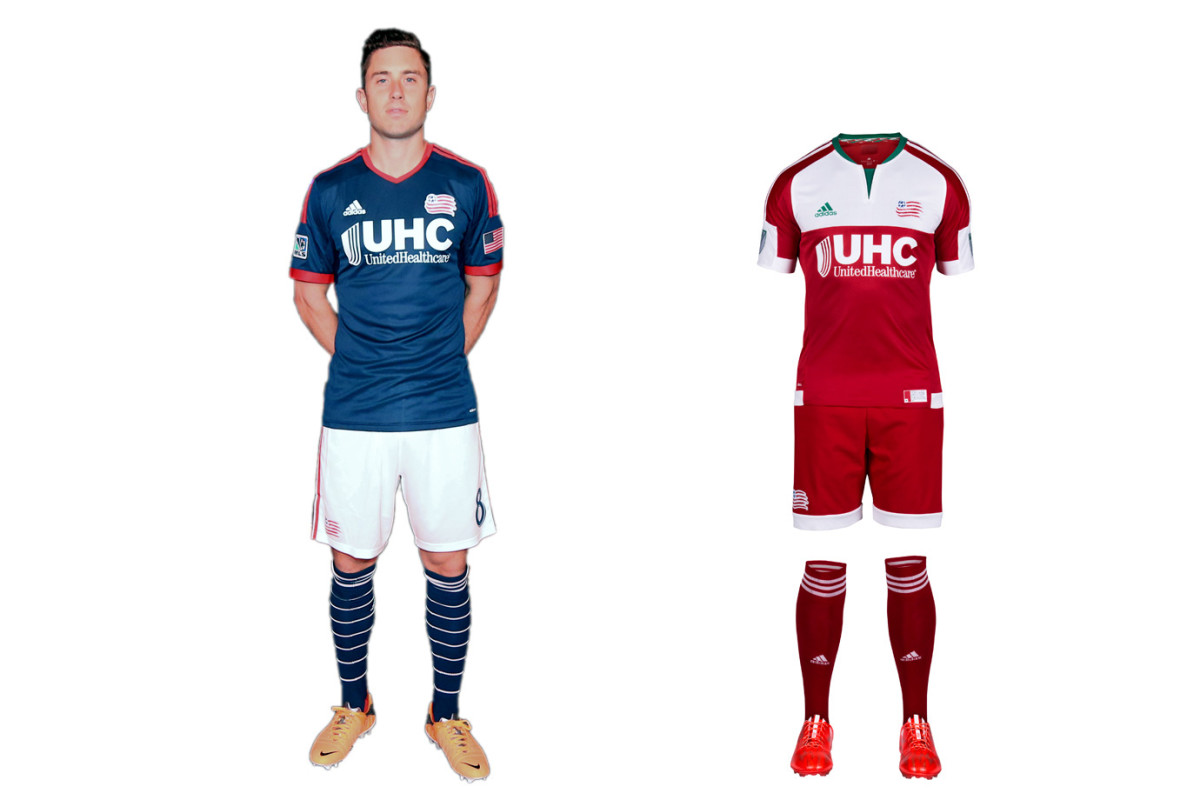
The Revs are Exhibit A for the effect a second color, even if it comes from something as mundane as a plain pair of shorts, has on a club’s brand. Long a believer in boring, N.E. last year overhauled its home blues with white shorts and hooped socks. It’s a classy yet instantly recognizable look. The image shake-up continued Tuesday with a new secondary kit inspired by the regional flag flown during the American Revolution. The red-and-white set is clunky and geometric, but it’s different, daring and local. Better to take a chance than look dull and anonymous.
Philadelphia Union
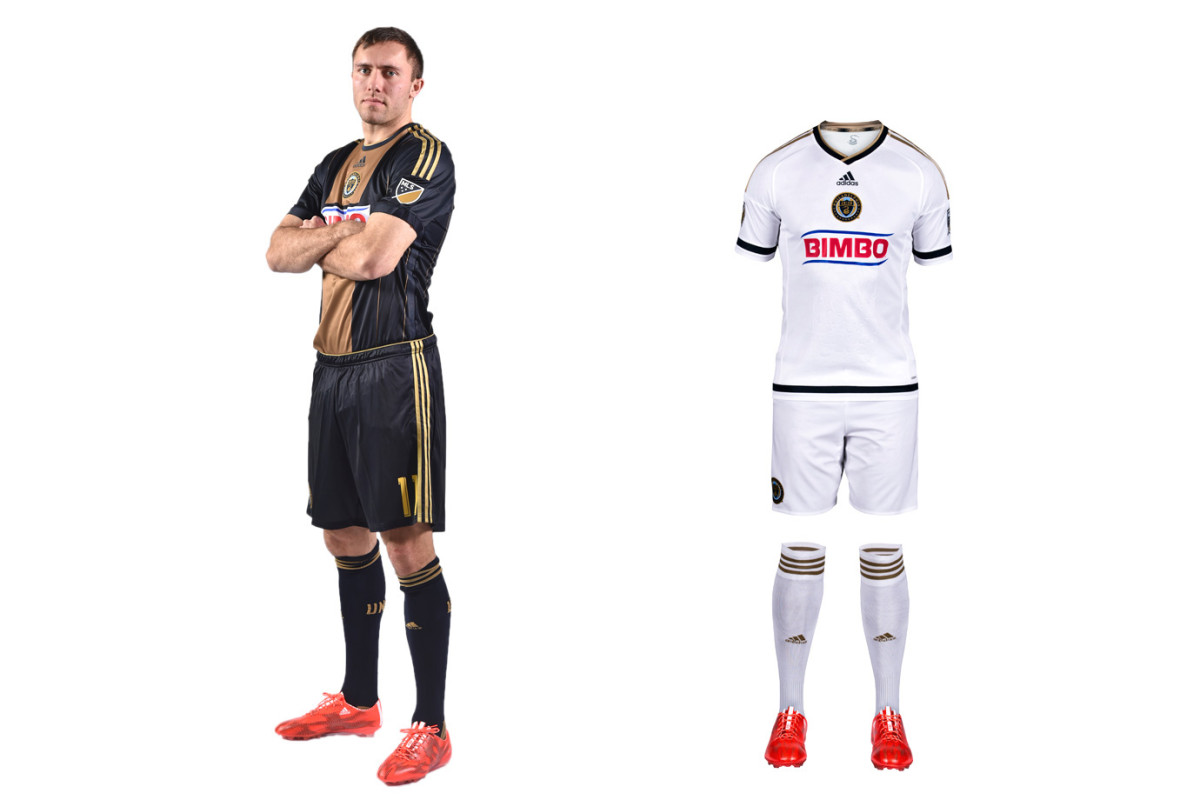
The Union got it right in 2010. The inaugural navy kit with the gold center stripe, reflecting the Philadelphia flag, was iconic. The gold-and-blue away set, a reversal of the primary, was one-of-a-kind. The holdover home uniform still looks great, although the sponsor’s logo wrecks the balance. But the new secondary is a disaster, a needless departure from the brand and an 10th all-white MLS kit. Once innovators, the Union are now followers. The “WE ARE ONE” collar slogan, the tiny snake below the neckline and the embossed stars on the front are lost in a sea of white.
Vancouver Whitecaps
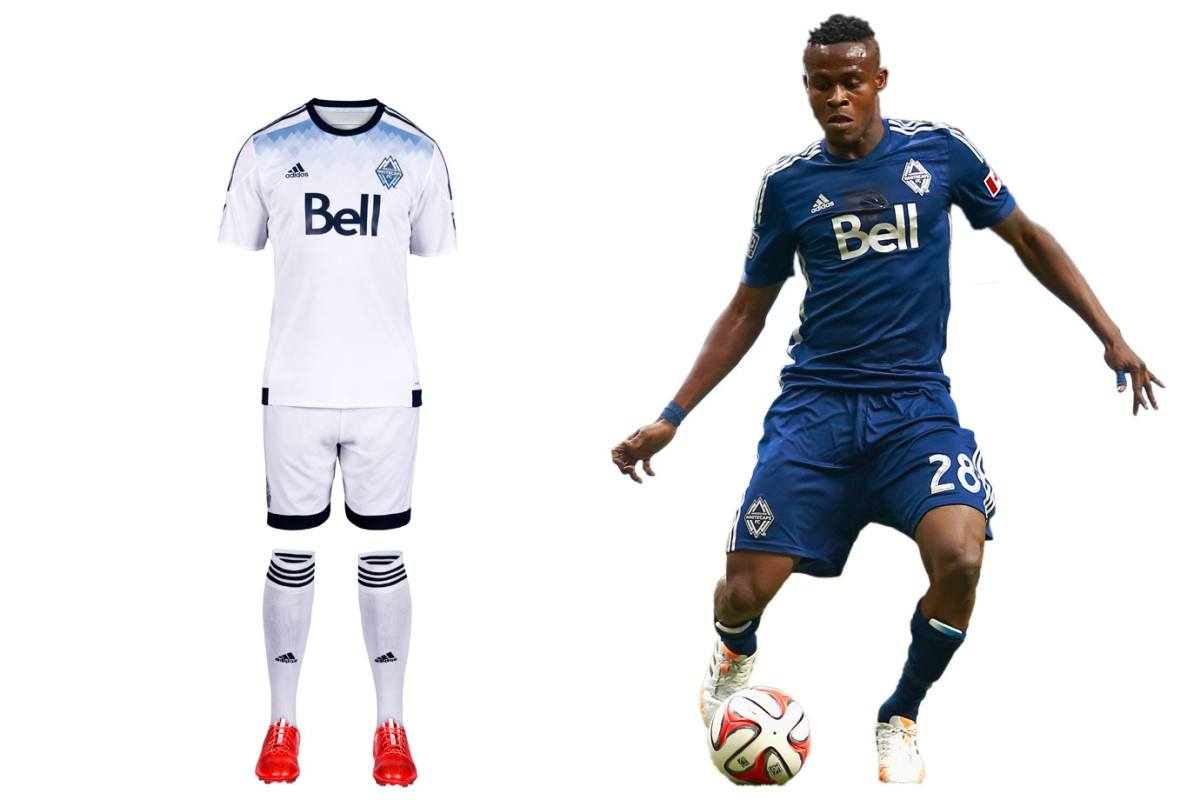
The Vancouver Whitecaps new primary uniform is meant to be experienced up close. It’s slogan heavy. “Our All. Our Honour.” appears inside the neck and on the hip. “SINCE 1974” is on the back. The thin, diagonal pinstripes that featured on the previous home kit have been replaced by light blue shading designed to represent Vancouver’s water and mountains. It’s all a bit too subtle. The shirt will look nice with jeans, but in the end, Vancouver’s all-white kit—and the holdover mono-navy secondary—simply blends in.
Portland Timbers
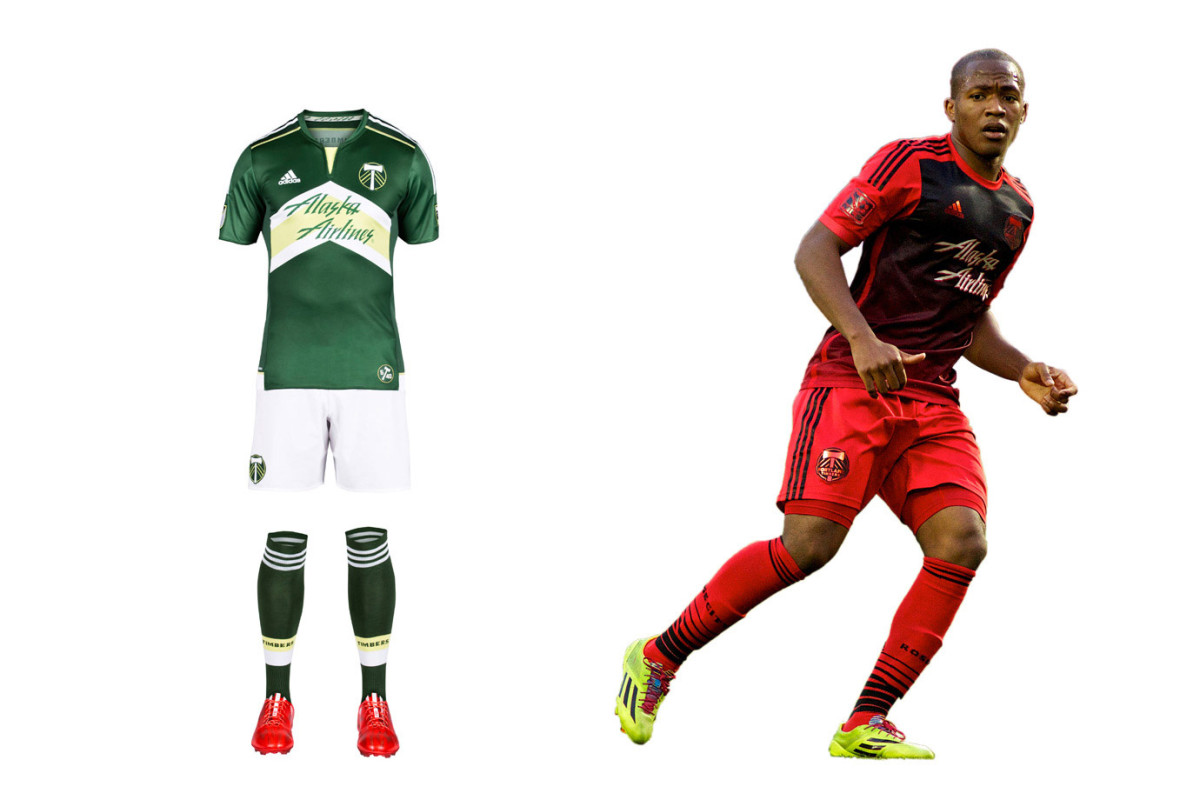
Portland quietly switched crests, from a logo featuring its name to a simpler version focusing on the axe and chevrons (the old logo lives on elsewhere). Few teams wear a badge with no writing, but the Timbers can because they’ve built such a powerful brand. Only they could wear the new home set, a bold green-and-white offering anchored by the chevrons. They're a bit wide, and the yellow below the collar clutters the shirt, but it's impressive overall. The road kit, released in 2014, is everything a good one should be: distinctive, perhaps edgy, yet connected to the club. In this case, Rose City red.
Columbus Crew
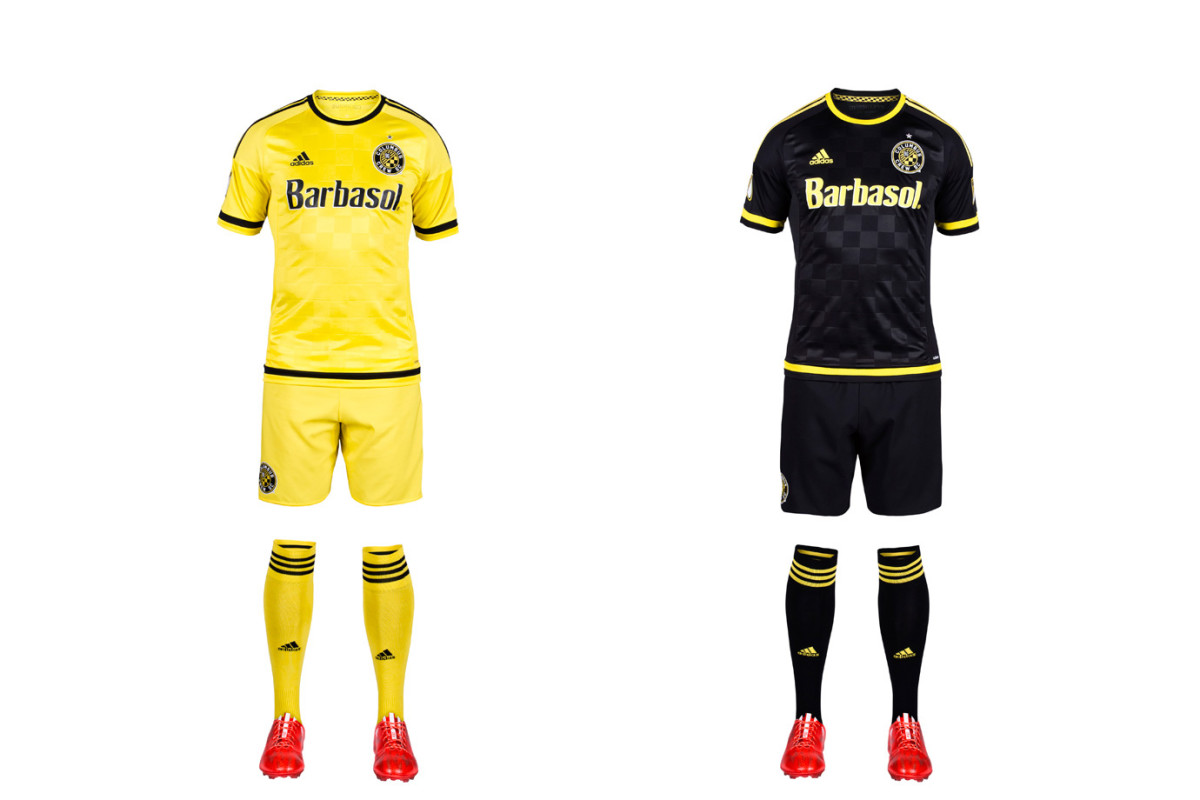
The Crew released new home and away sets featuring the club’s revamped logo, a roundel that looks nice enough but makes sense only with a cheat sheet. The explanations (the ‘O’ for Ohio, the founding year, the checkerboard pattern found in flags waived by fans) certainly tie the club to Columbus more than the goofy construction workers did. As the Crew forge ahead, they’ll stay true to their sartorial tradition. The all-yellow primary is simple but elegant, and certainly recognizable. The mono black secondary could use a bit of flourish–why so subtle with the checkers? But it works and shouldn't be needed that often, anyway.
Orlando City SC
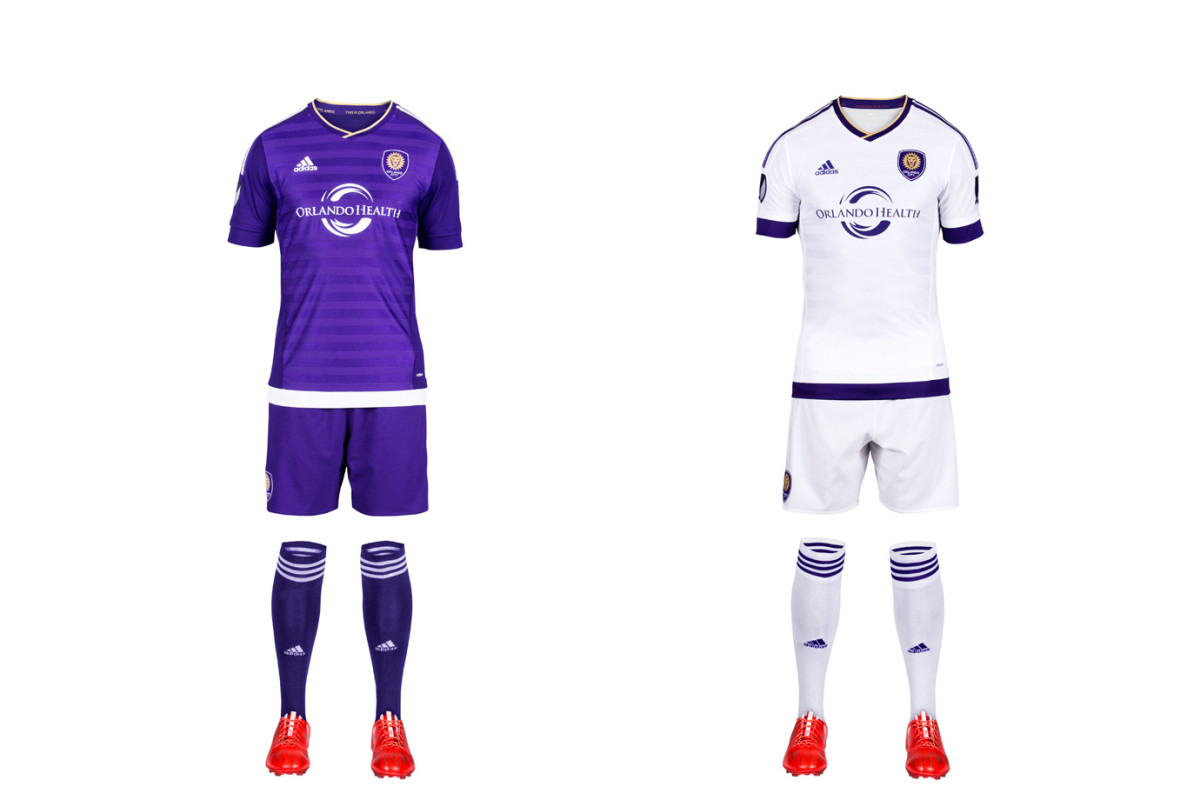
The Lions’ love for purple is welcome in a league featuring so many similar looks. But it didn't result in creative inaugural kits. The home uniform features more up-close details, like “jacquard engineered banding…representing Orlando City’s transition to a new era” and even the club's old USL logo inside. The mono-white secondary has colored hoops on the waist and sleeves and includes more small symbols and slogans. But it’s still just another white set. The answer is obvious—swap the socks. The “Chelsea” look is underrated. White hosiery at home and purple on the road would make all the difference.
New York Red Bulls
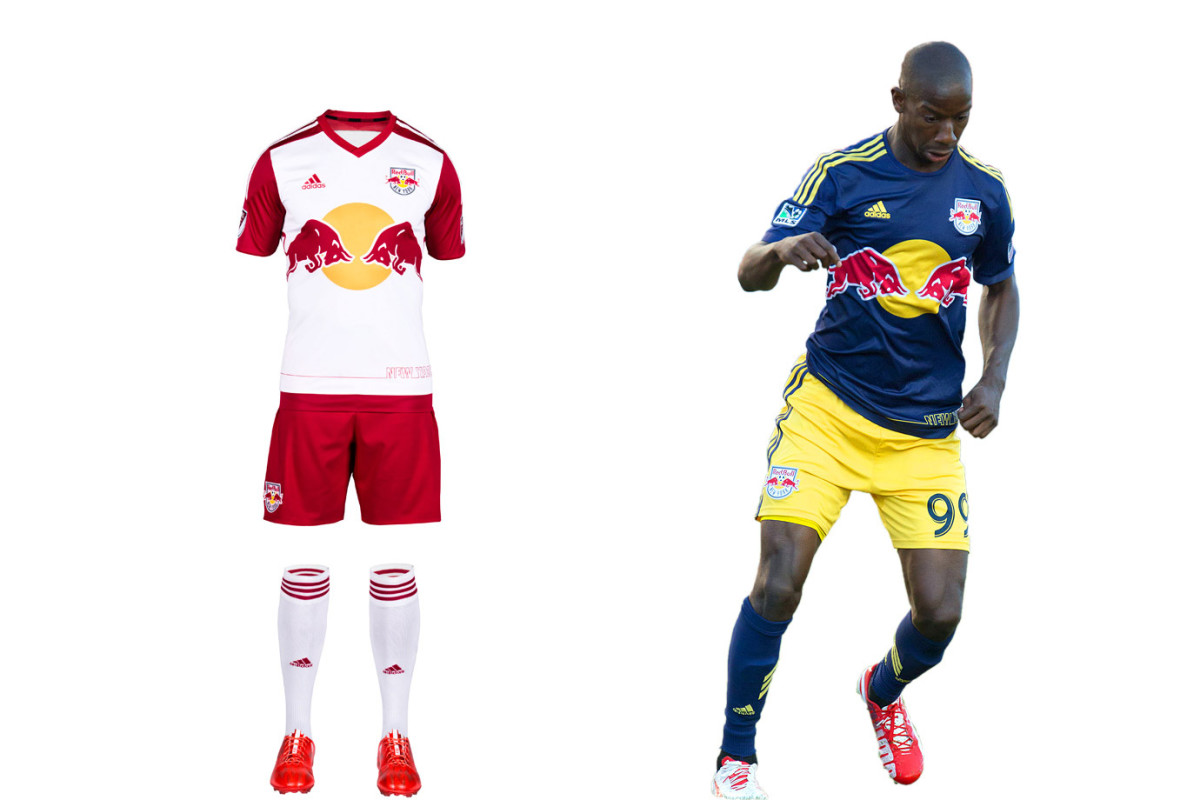
The Red Bulls have company in New York so have set out to reinforce their tenuous connection to the market within the constraints of the club’s corporate brand. The only white-red-white team in the league, RBNY now must compete with NYCFC’s pale blue. The Red Bulls’ new home set doubles down on that contrast with red sleeves and “NEW YORK” emblazoned on the shirt’s lower left in a manner “mimicking the iconic New York skyline.” The “EST.1996” on the back collar reminds fans who was there (or nearby) first. The holdover secondary definitely is unique and is great in reasonable doses.
Houston Dynamo
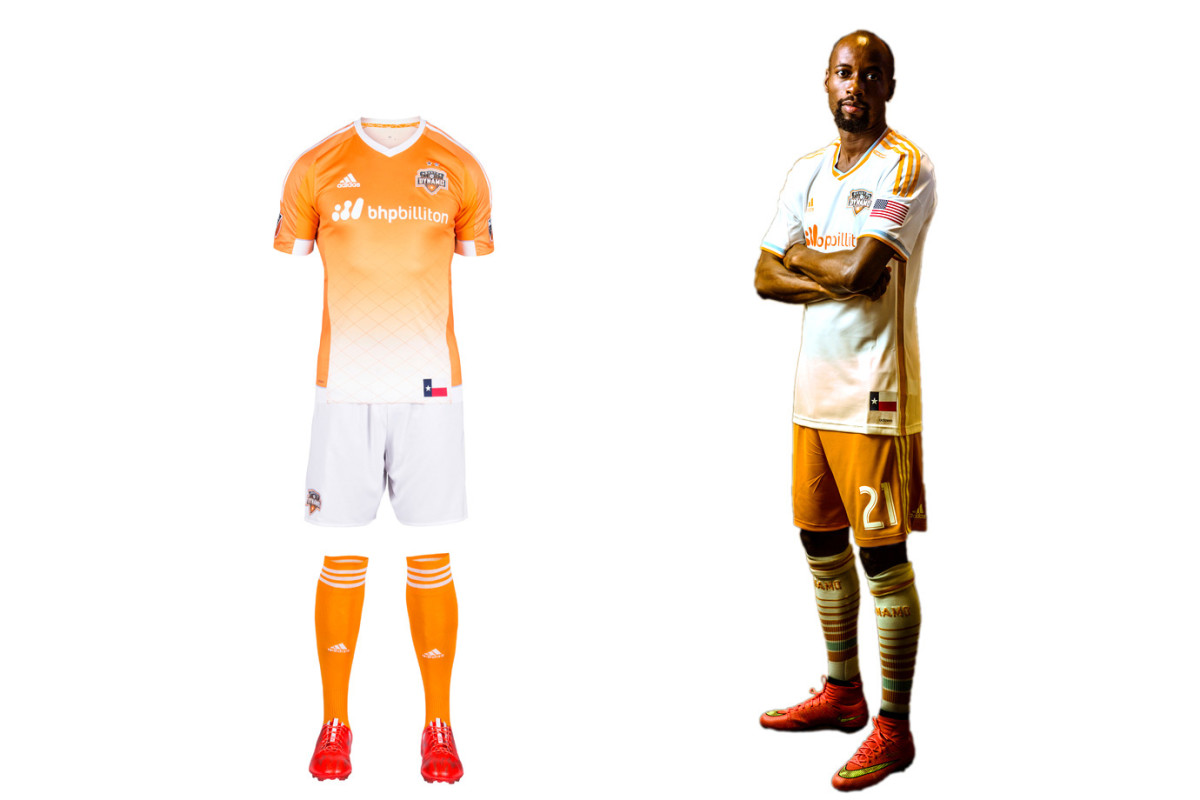
Houston’s club motto is “Forever Orange,” and while that remains the cornerstone of the brand, the Dynamo typically add a wrinkle here and there to ensure we’re not beaten over the head with it. The new home uniform is a great example. The white shorts and checkered fade on the jersey add the right amount of contrast. On occasion, the Dynamo have worn monochrome both home and away. But there’s no need to do so, especially on the road. The balance in the primary kit and the immediately identifiable orange shorts with the secondary set showcase the Dynamo at their best.
Sporting Kansas City
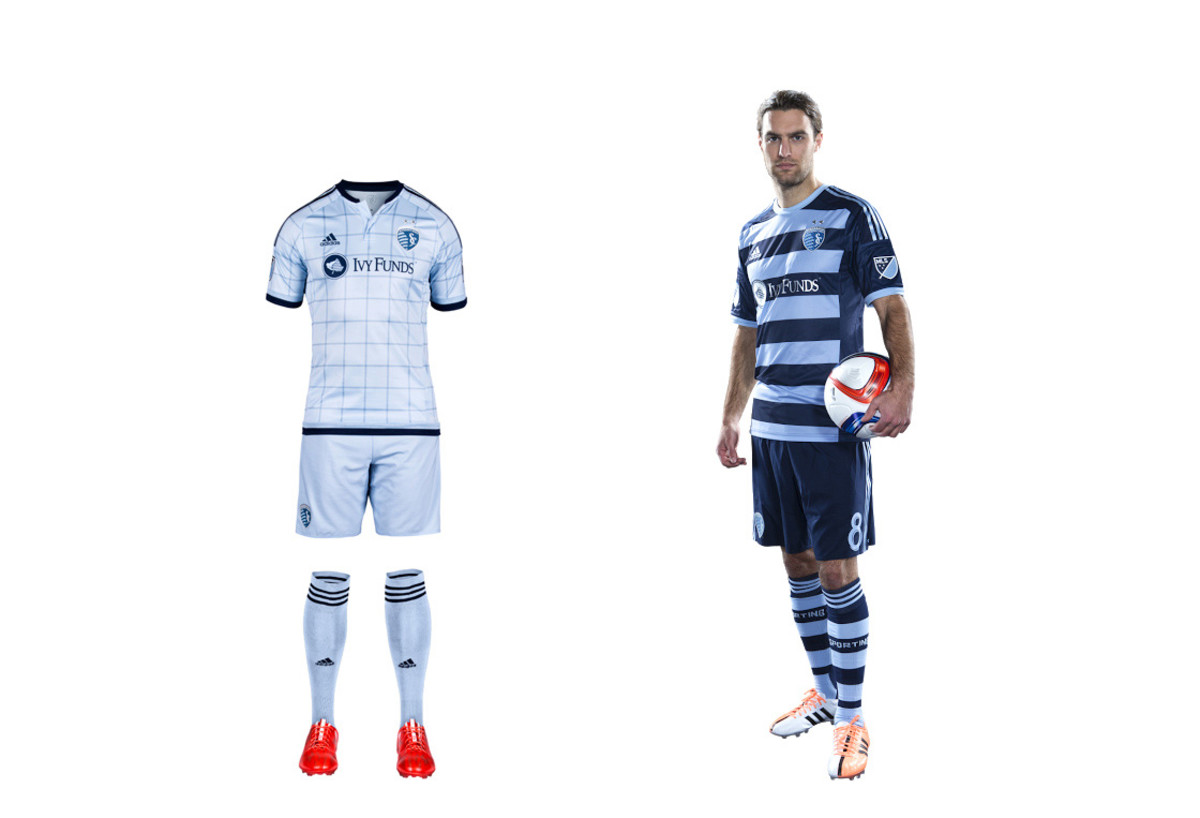
From irrelevant to trendsetting, SKC has profited from one of the most successful sports rebrands in recent history. The club now must share light blue with NYCFC, but Sporting still stands out. The new home set is a departure form the bicolor “state line” uniform of 2013-14 and is anchored by a “fashion-forward window pane pattern” that’s almost as preppy as the recent argyle alternate kit. The secondary uniform is stunning. The hoops, which mirror the stripes on the club crest, highlight one of the most eye-catching sets in MLS history. It’ll be tough to see it go after this season.
FC Dallas
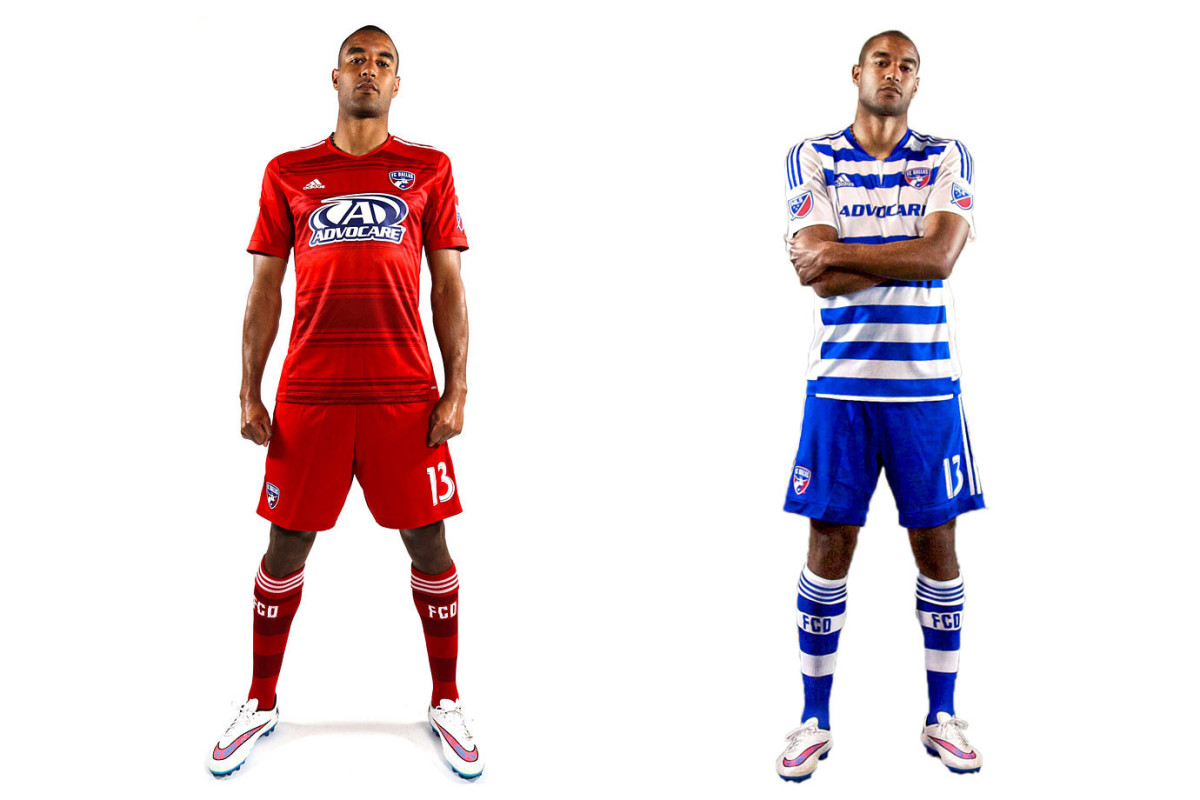
FCD’s kits are an example of a good idea, poorly executed. The club made an inspired decision to go with hoops when rebranding in 2005, but the jerseys always let them down. Unnecessary seams, plackets and panels always ruined the shirt. Dallas gave up last year and went with a boring all-red primary. But it stuck with the hoops on the new blue-and-white secondary, where the side panels and sleeves still disrupt the flow. Both blue and white shorts are an option. Our 2016 ideal: a primary jersey with seamless, sleek red and blue hoops. Unique and colorful, but less jarring. Make it happen.
Colorado Rapids
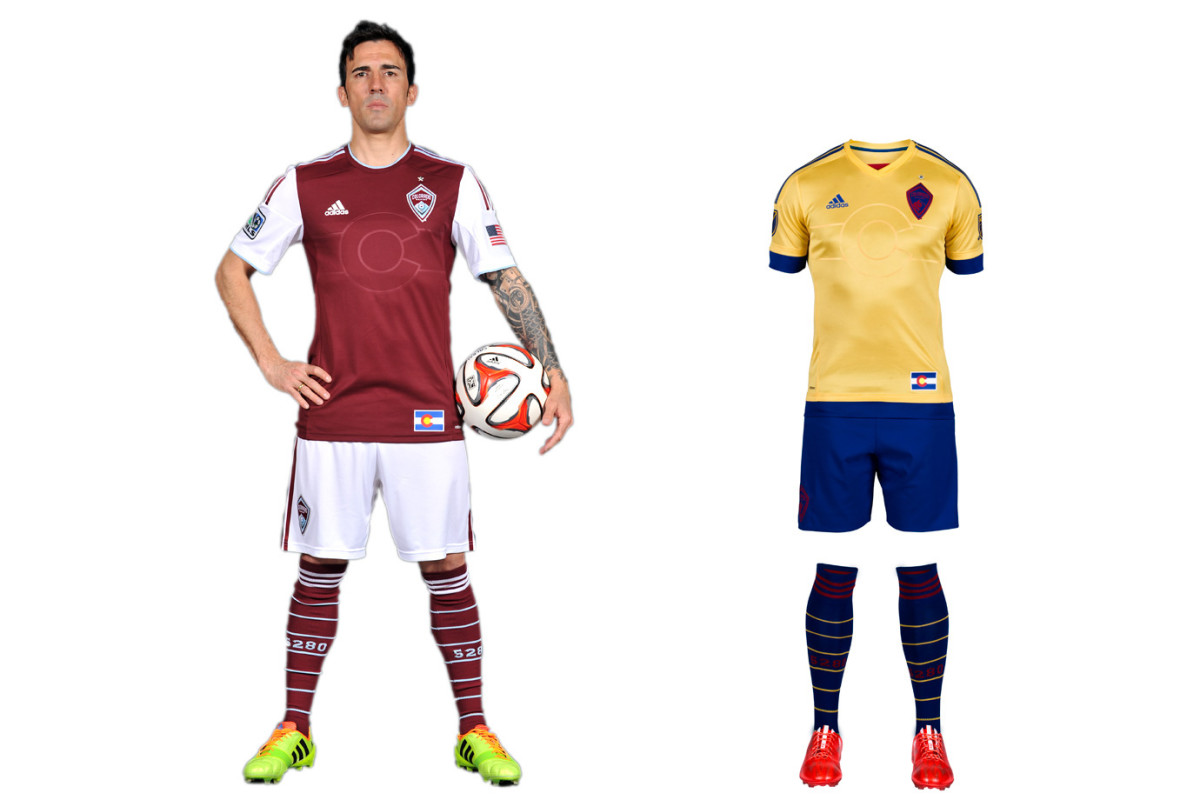
Another club that’s bounced from brand to brand (green-and-white, blue-and-black), the Rapids have settled in nicely with the unique but elegant burgundy-shirt, white-shorts combo. The sleeves, which mirror those worn by sister club Arsenal, add a subtle touch of flair. The new away uniform is a prime example of how a secondary kit can be tasteful and connect to a club’s brand. Last season’s mono blue state-flag set has evolved into a sharp gold-and-blue kit that maintains Colorado's colors and stands out from the crowd. We’re not fans of recolored badges—logos should be sacrosanct—but overall it’s a winner.
Seattle Sounders
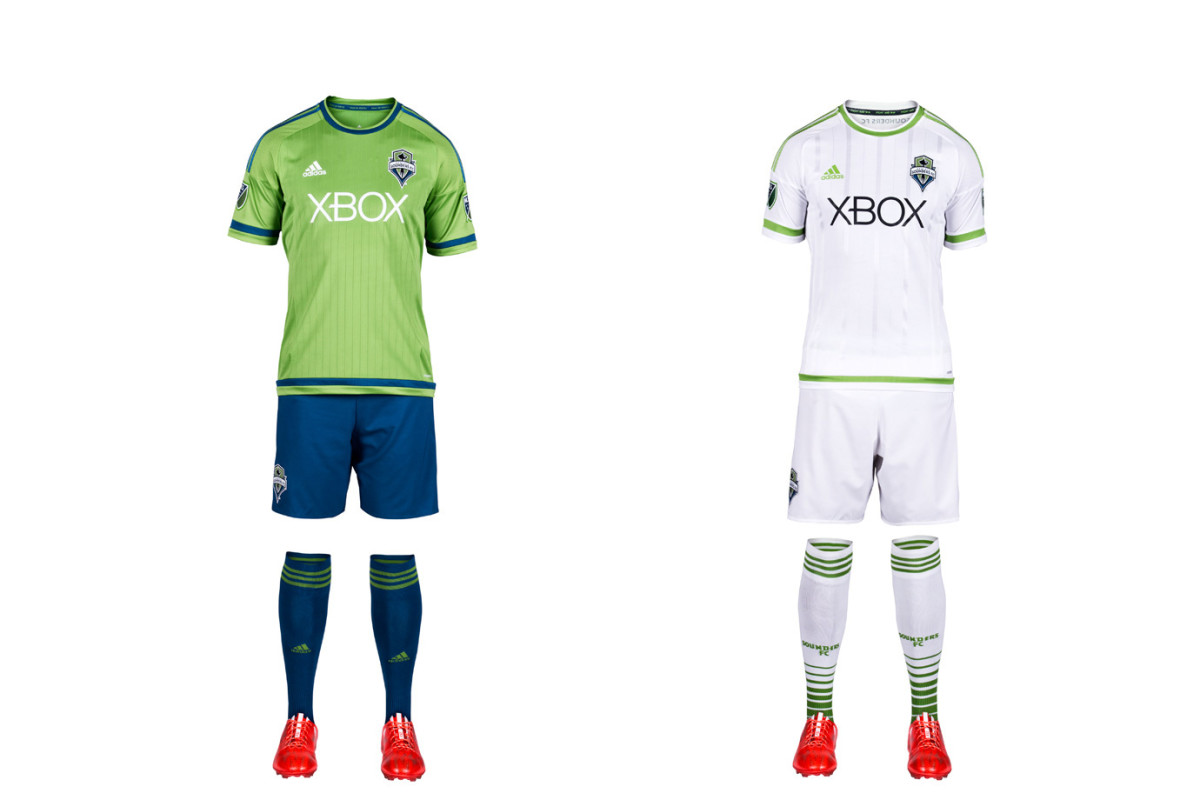
The club that brought us rave green, cascade shale, super cyan and electricity has succumbed to the all-white virus. Seattle is one of five MLS clubs to adopt the look this season, ensuring half the league now embraces the white-out copout. The Sounders new away kit is especially devoid of any personality—a surprising choice for a club that has much of it. The new home set features a less cluttered shirt than in seasons past. It’s a template, but it’s a step up. The uniform also features blue shorts and socks for the first time. Here’s hoping we see it as often as possible.
San Jose Earthquakes
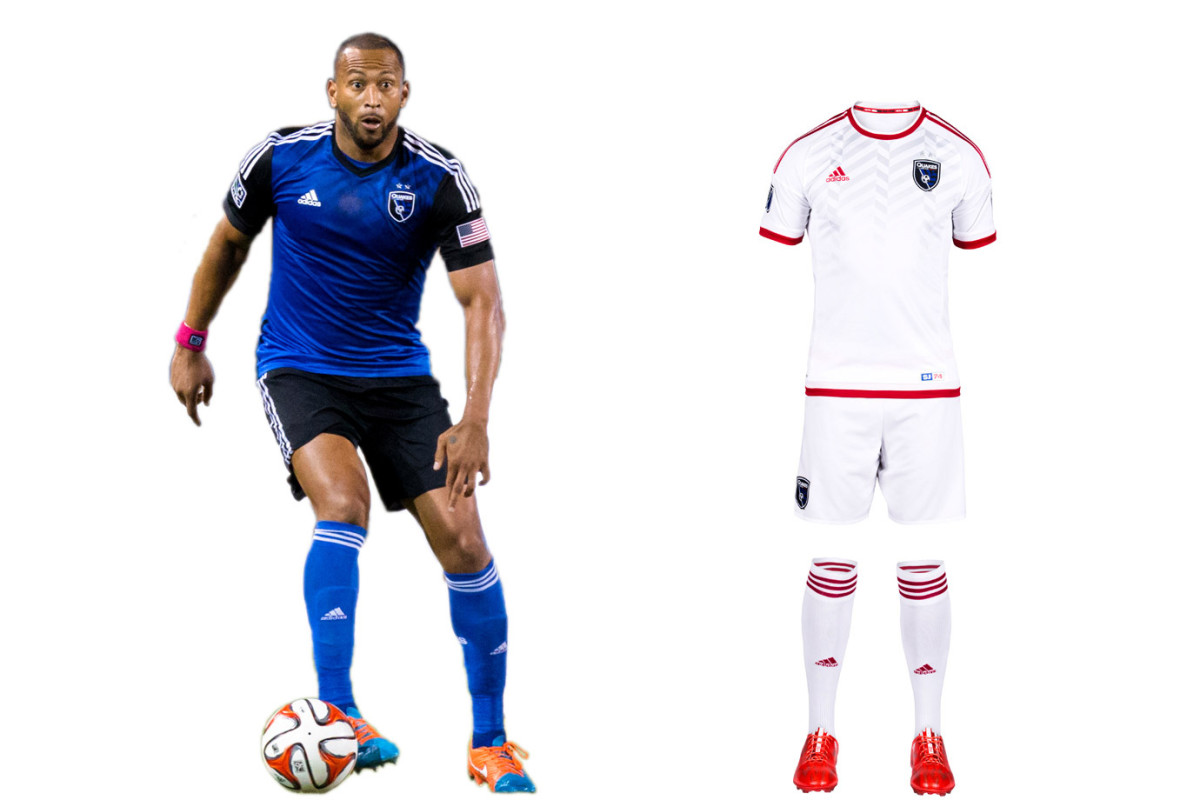
"Earthquakes" is an appropriate moniker for a club that’s experienced so much upheaval. While the new Avaya Stadium offers stability, the brand remains in flux. SJ’s '14 overhaul produced a beautiful blue-and-black primary kit that’s already a modern classic. But the logo, awkwardly anchored by “Quakes”—a nickname of a nickname—lacks gravitas. We liked the re-introduction of the NASL-era red, which inspired last year’s away kit. That’s been replaced by a new white secondary set (yes, another one). It lacks the creativity, individuality and ambition that should be associated with a Bay Area club on the rise.
